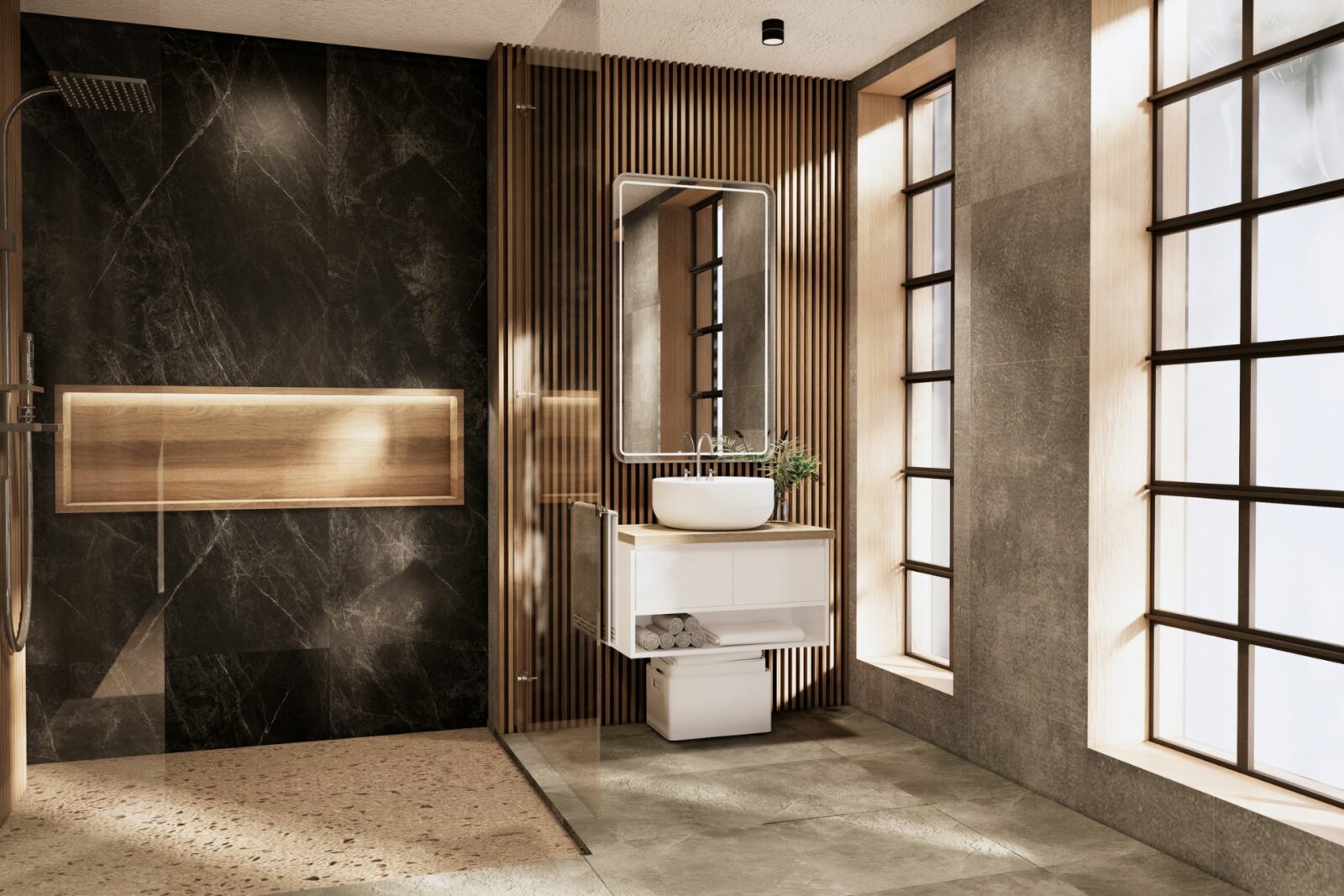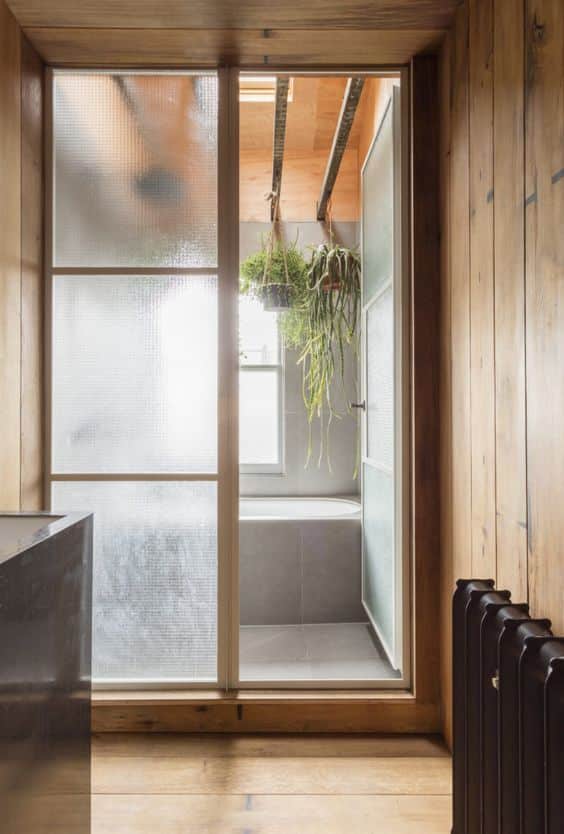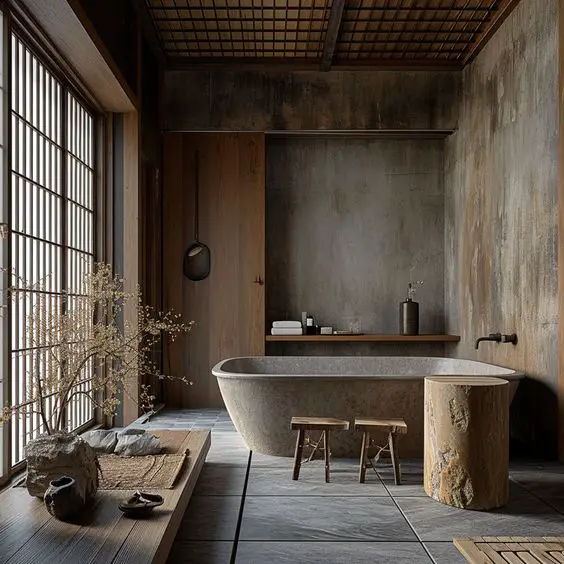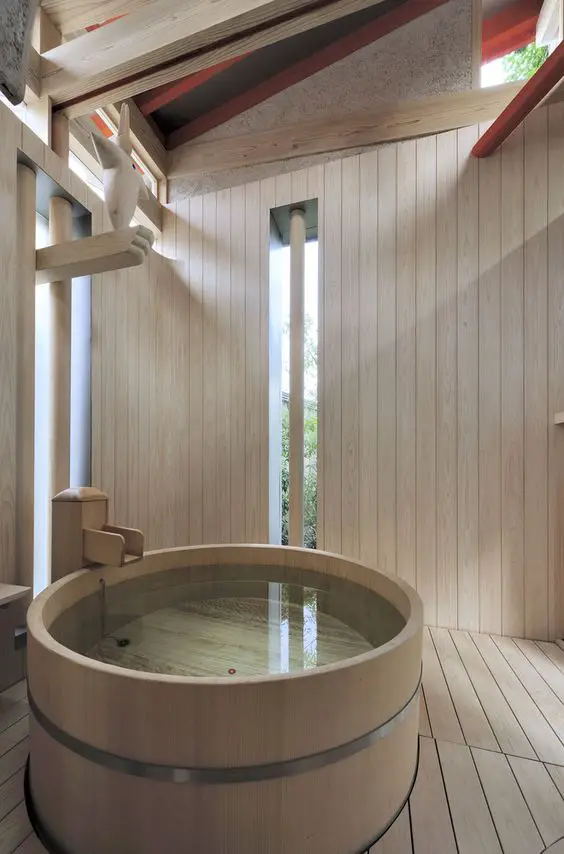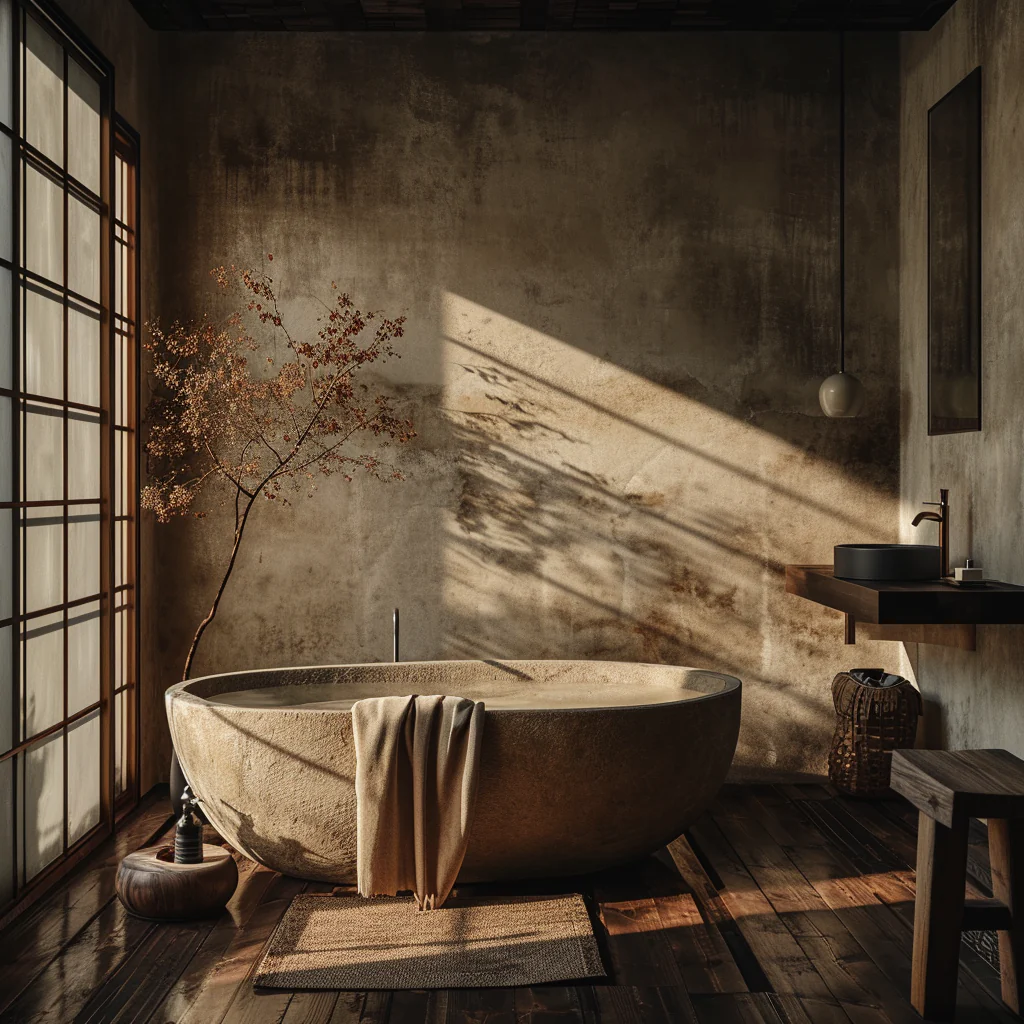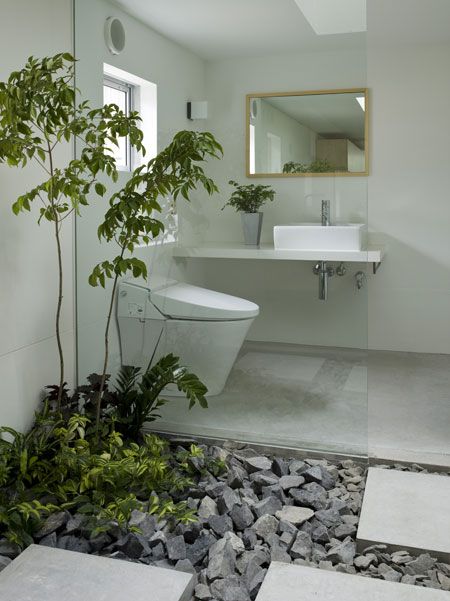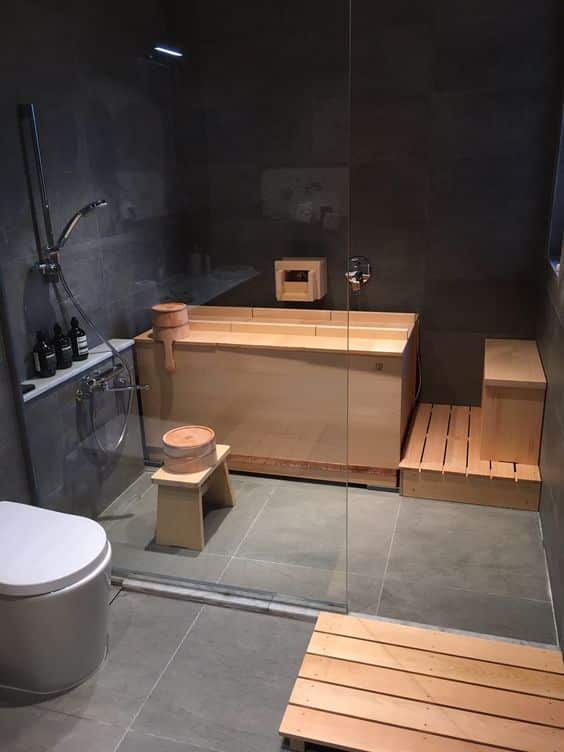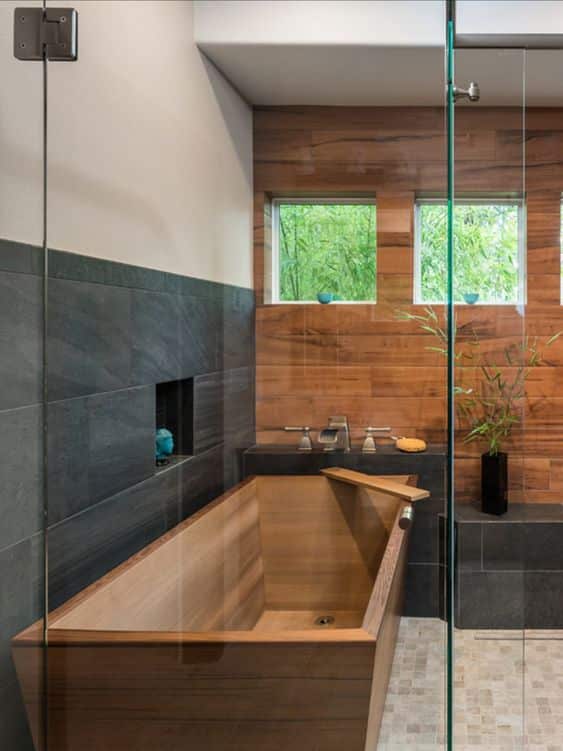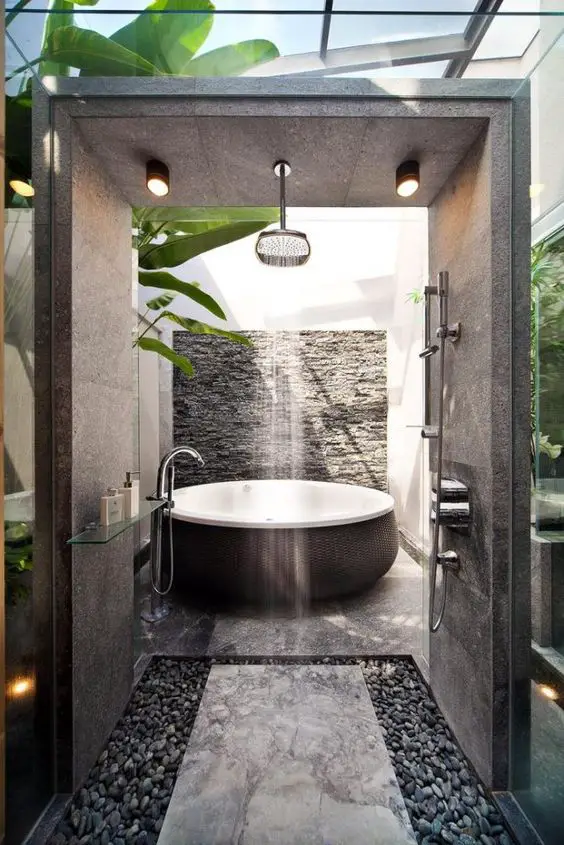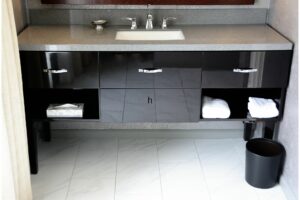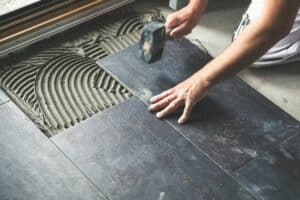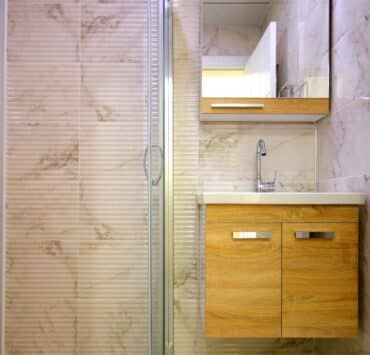Japanese bathroom design beautifully combines practicality, style, and a sense of peace. Inspired by Zen philosophy, these spaces are crafted to create a calm oasis for relaxation and self-care. Let’s dive into the key features of Japanese bathroom design and see how they can turn your daily routine into a soothing ritual.
26 Best Japanese Bathroom Design Ideas
1. Minimalistic Simplicity
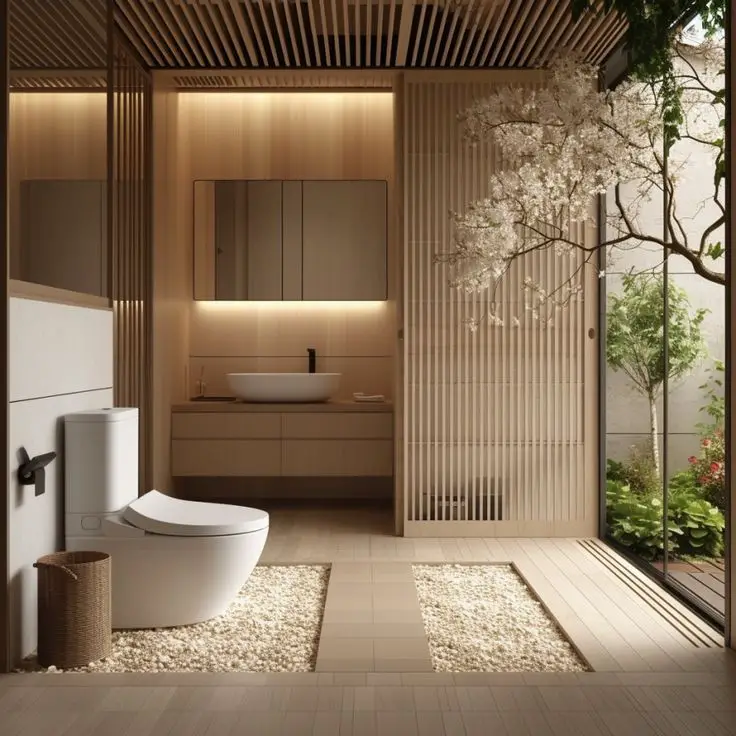 Japanese design places a strong emphasis on minimalism. The bathroom serves its purpose without unnecessary frills, creating a sense of calm and order.
Japanese design places a strong emphasis on minimalism. The bathroom serves its purpose without unnecessary frills, creating a sense of calm and order.
2. Open Space Concept
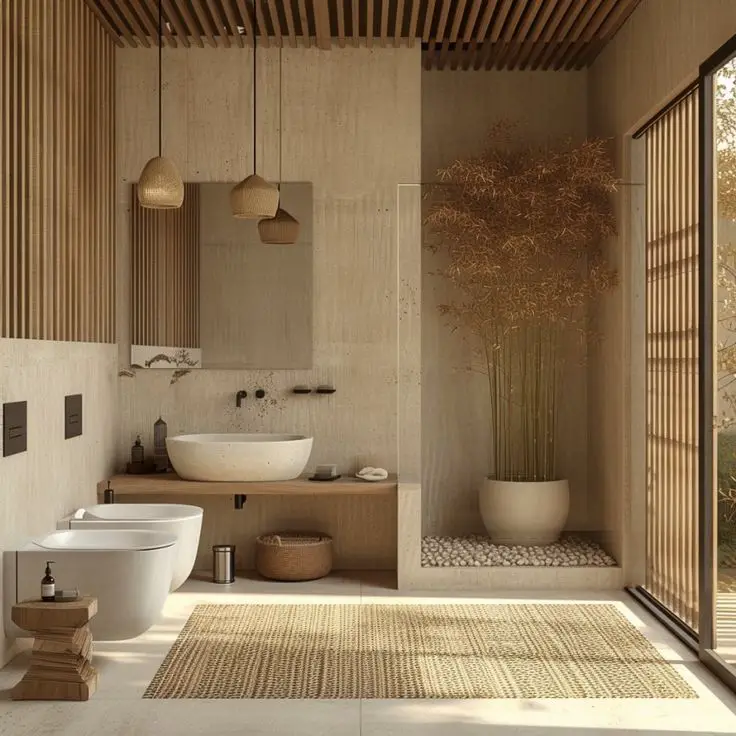 Incorporate an open layout that promotes a feeling of spaciousness, ensuring that the bathroom doesn’t feel cramped.
Incorporate an open layout that promotes a feeling of spaciousness, ensuring that the bathroom doesn’t feel cramped.
3. Neutral Color Palette
 Opt for neutral colors like whites, beiges, and soft grays to create a soothing and timeless atmosphere.
Opt for neutral colors like whites, beiges, and soft grays to create a soothing and timeless atmosphere.
4. Wood and Stone
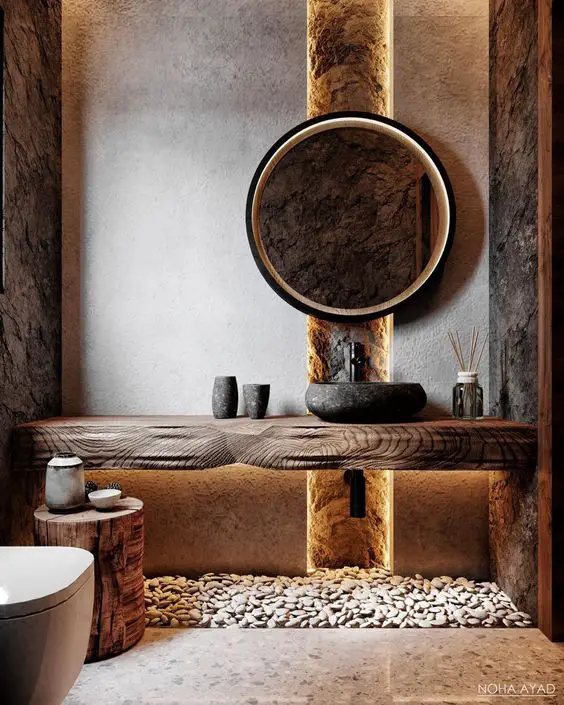 Utilize natural materials such as wood and stone to add warmth and a connection to nature. Wooden tubs and stone sinks are popular choices.
Utilize natural materials such as wood and stone to add warmth and a connection to nature. Wooden tubs and stone sinks are popular choices.
5. Indoor Plants
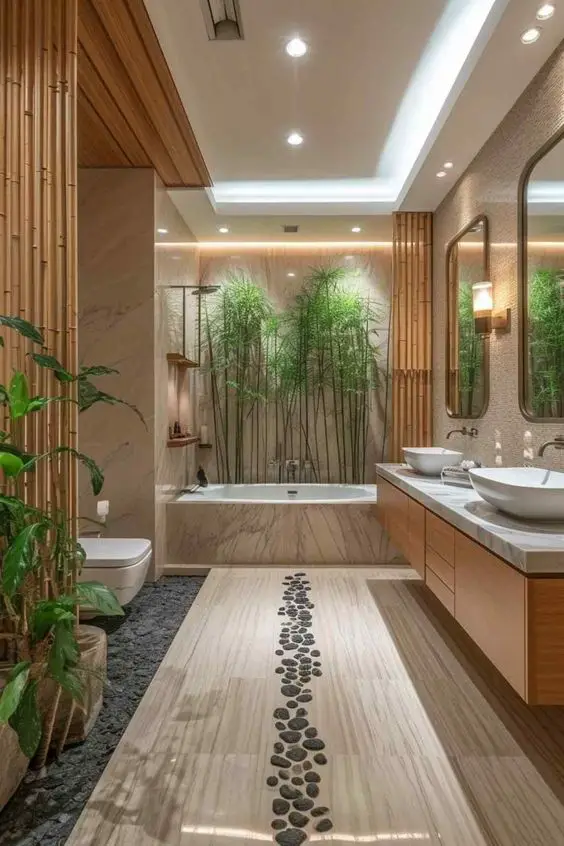 Introduce indoor plants like bamboo or bonsai to infuse a touch of greenery and life into the space.
Introduce indoor plants like bamboo or bonsai to infuse a touch of greenery and life into the space.
6. Japanese-Style Bathtubs
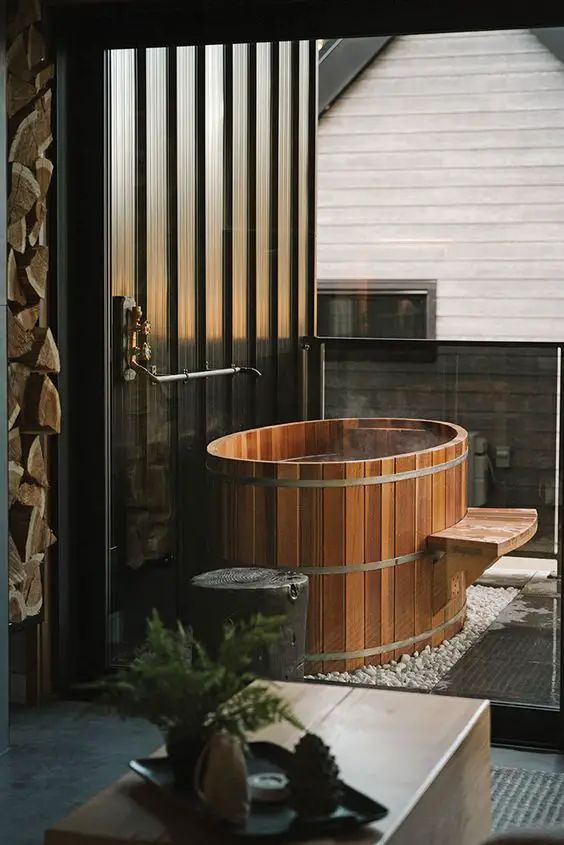 The focal point of a Japanese bathroom is often the bathtub, which is designed for relaxation and rejuvenation. The traditional Japanese soaking tub, known as “ofuro,” is deep and compact, allowing for a full-body soak in hot water.
The focal point of a Japanese bathroom is often the bathtub, which is designed for relaxation and rejuvenation. The traditional Japanese soaking tub, known as “ofuro,” is deep and compact, allowing for a full-body soak in hot water.
7. Serene Lighting
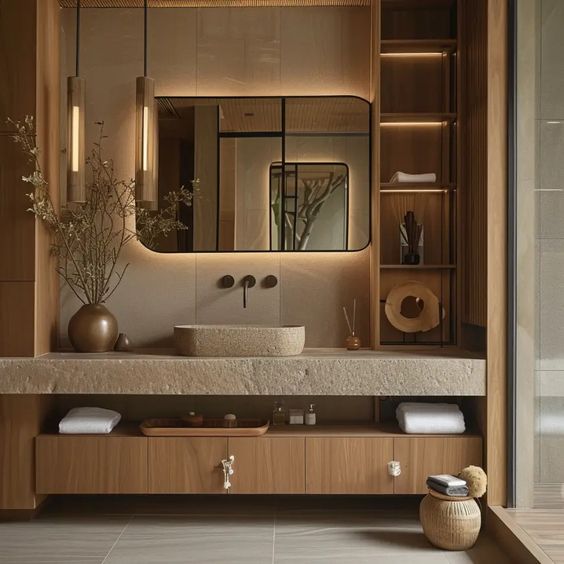 Lighting plays a crucial role in Japanese bathroom design, setting the mood for relaxation.
Lighting plays a crucial role in Japanese bathroom design, setting the mood for relaxation.
8. Natural Light
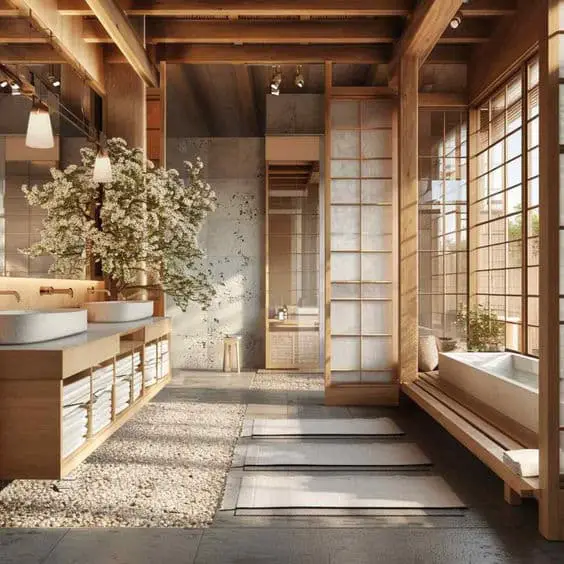 Maximize natural light by incorporating large windows or skylights, connecting the indoor space to the outside world.
Maximize natural light by incorporating large windows or skylights, connecting the indoor space to the outside world.
9. Ample Storage
 Japanese bathrooms are designed with practicality in mind, ensuring that every element serves a purpose. Storage solutions are discreet and integrated, keeping the space clutter-free and promoting a sense of order.
Japanese bathrooms are designed with practicality in mind, ensuring that every element serves a purpose. Storage solutions are discreet and integrated, keeping the space clutter-free and promoting a sense of order.
10. Functional Details
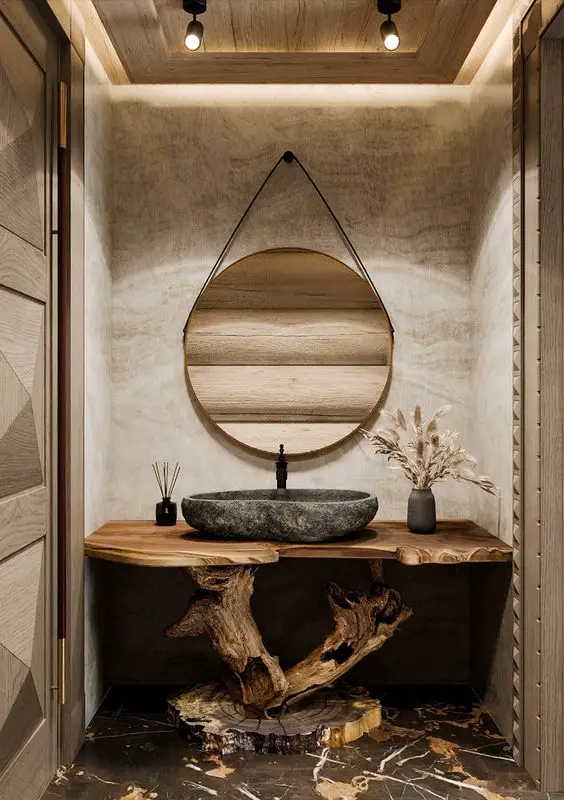 Faucets, fixtures, and hardware are designed to be efficient and unobtrusive, maintaining the minimalist aesthetic.
Faucets, fixtures, and hardware are designed to be efficient and unobtrusive, maintaining the minimalist aesthetic.
11. Sunken Bath Overlooking Zen Garden
A Japanese bathroom design idea is elevated by a sunken bath that offers views of a serene Zen garden, making it perfect for relaxation and style.
12. Shoji Doors
Incorporating shoji doors into the design of a Japanese bathroom adds an authentic touch of elegance and tranquility.
13. Stone flooring
Stone flooring in a Japanese bathroom design adds a natural and grounding element, enhancing the overall aesthetic and creating a serene atmosphere.
14. Wooden Accents
15. Wall Murals
Wall murals in a Japanese bathroom can depict serene nature scenes or traditional motifs, adding depth and visual interest to the space while invoking a sense of harmony and tranquility.
16. Zen Elements
Integrate small rock gardens or sand features into your design for a Zen-inspired touch.
17. Incorporate Small Stools
Small stools that reflect traditional Japanese bathing practices can be incorporated into the design.
18. Rain Shower Heads
Install rain shower heads to recreate the sensation of natural rainfall.
19. Bath Bridges
Add wooden platforms across the tub to hold bath items.
20. Ornamental Rocks
Ornamental rocks can be strategically placed for their visual appeal and calming effects.
21. Natural Aromas
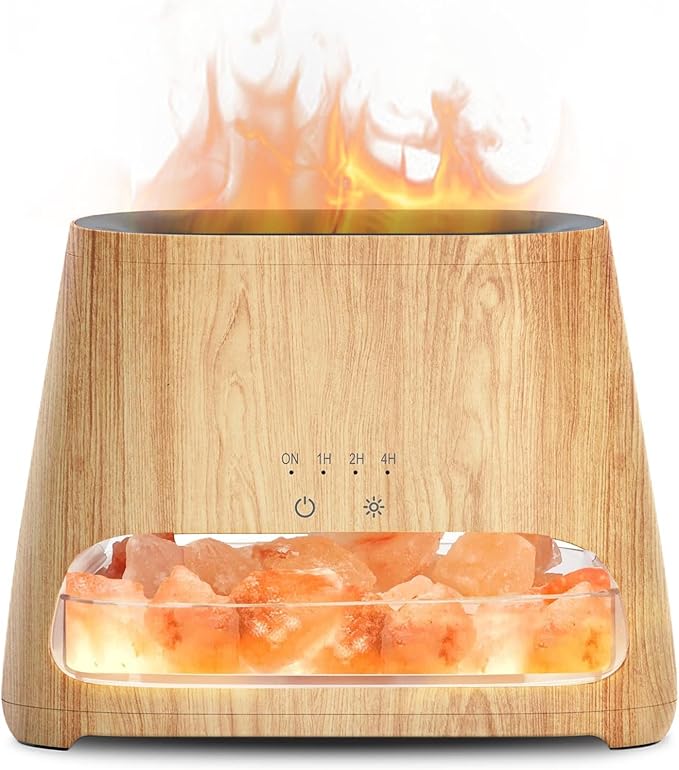
Incorporate natural aromas such as cedarwood, eucalyptus, or bamboo. Essential oil diffusers or natural wood incense can bring a subtle, calming scent to the bathroom, enhancing the sensory experience and promoting relaxation.
22. Floor Seating Area
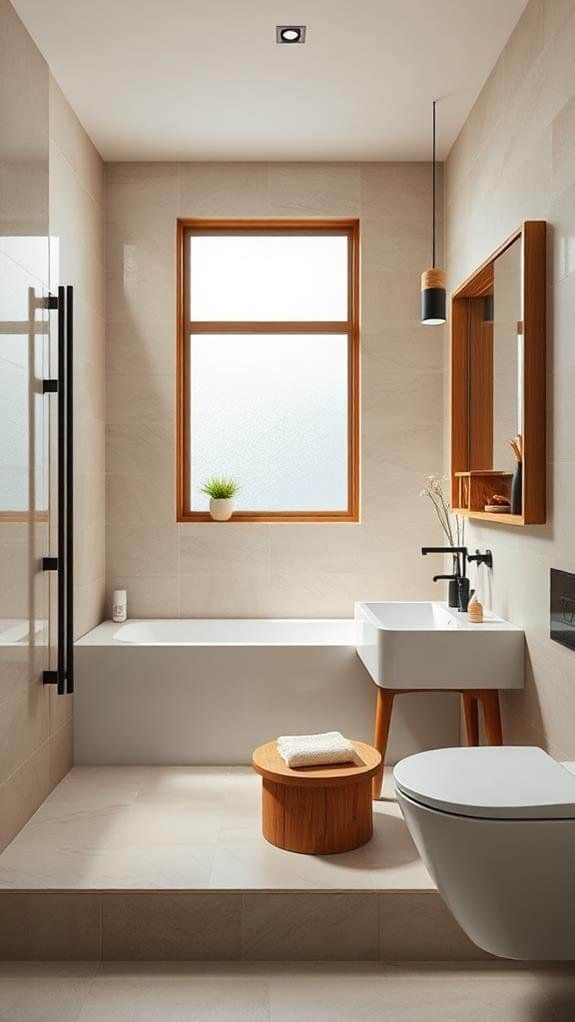
A low seating area on the floor, perhaps with a cushion or low stool, can serve as a small meditation or contemplation zone within the bathroom, following Japanese principles of floor-based relaxation.
23. Bamboo Blinds
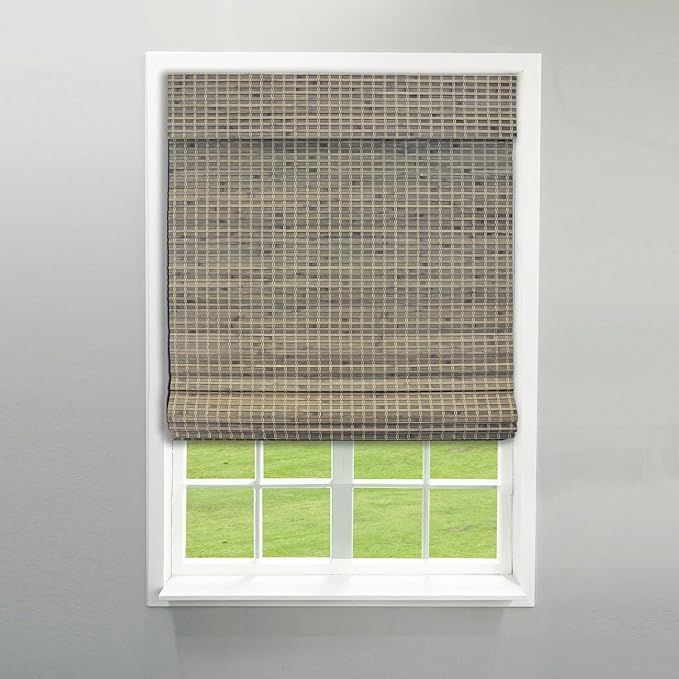
Install bamboo blinds for window treatments. They filter natural light beautifully, creating soft, diffused lighting while adding a natural texture to the space.
24. Subtle Sound Elements
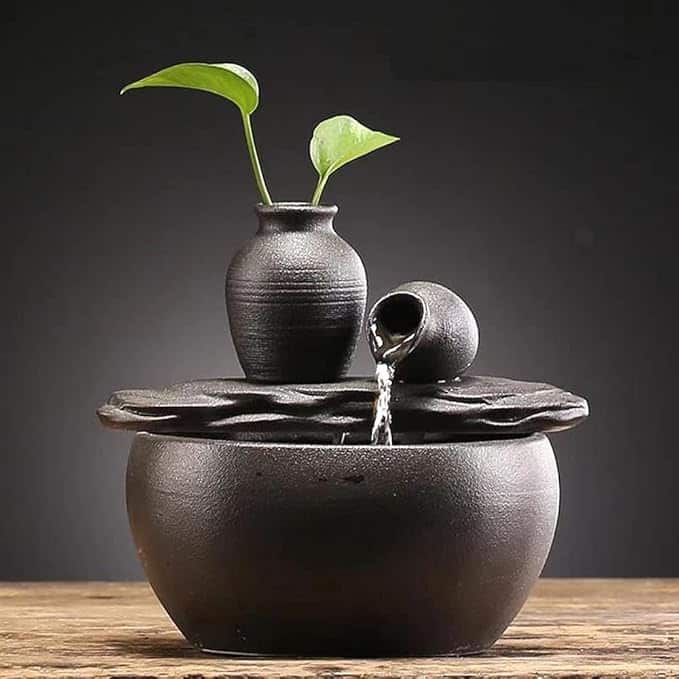
Incorporate a small fountain or other water features to add a gentle, soothing sound. The sound of trickling water can create a meditative atmosphere, perfect for unwinding.
25. Hot and Cold Stone Therapy
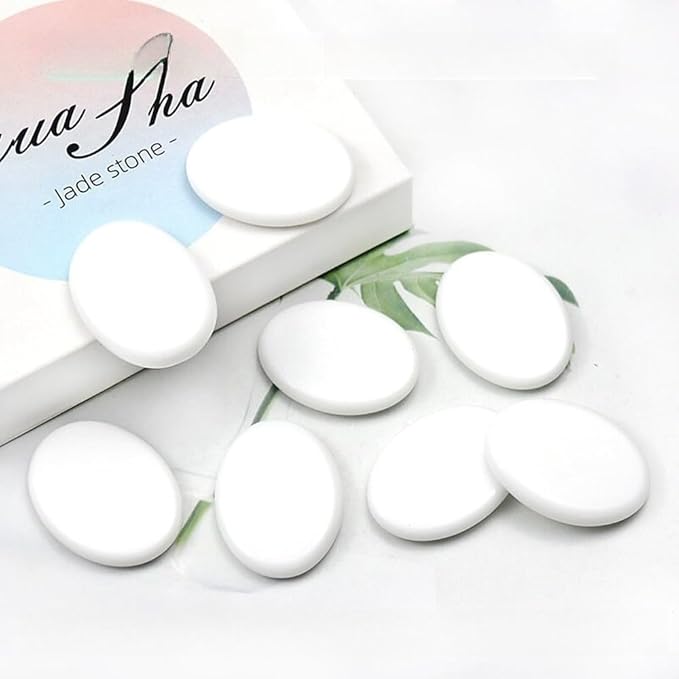
Integrate smooth hot and cold stones for a therapeutic bath experience. These stones can be heated or cooled and placed in the bath or used for massage, elevating relaxation.
26. Washitsu Room Adjacency
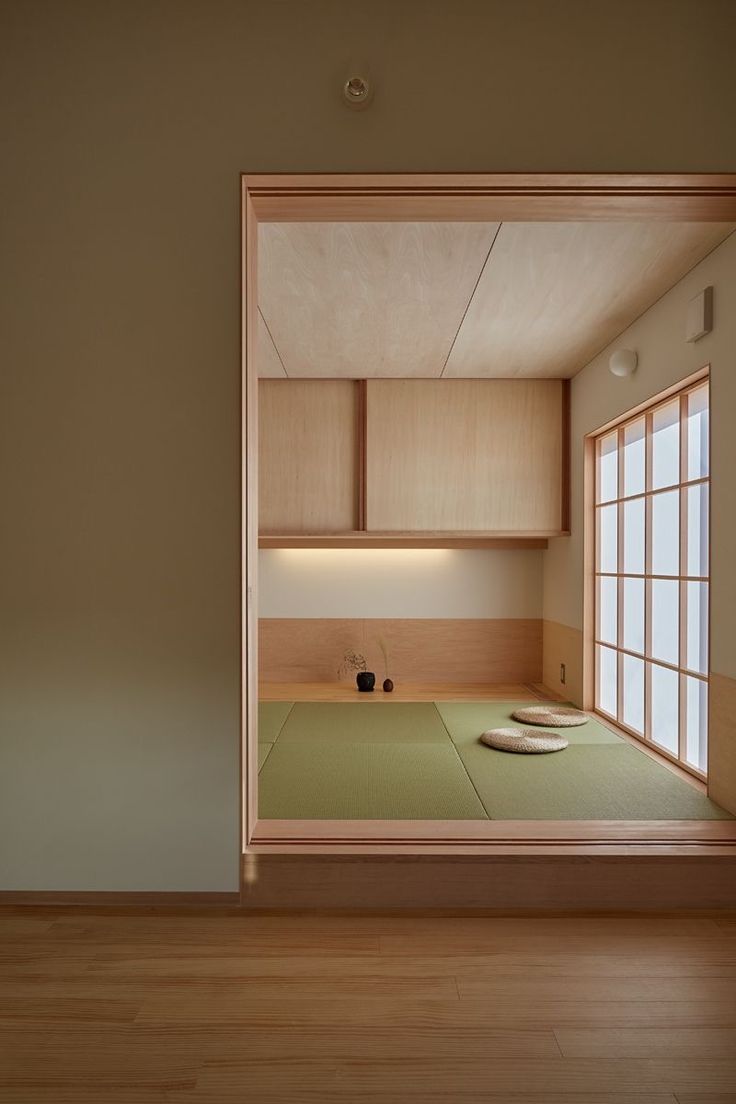
For a truly authentic experience, situate the bathroom adjacent to a washitsu (tatami room) if space allows, creating a seamless flow between relaxation and reflection areas.
Japanese bathroom design is a harmonious blend of simplicity, natural elements, and serene ambiance. By embracing minimalism, incorporating natural materials, and focusing on practicality, you can create a tranquil retreat within your home. Whether you’re seeking a rejuvenating soak or a serene space for self-care, Japanese bathroom design offers a profound and peaceful experience that uplifts both body and spirit.
